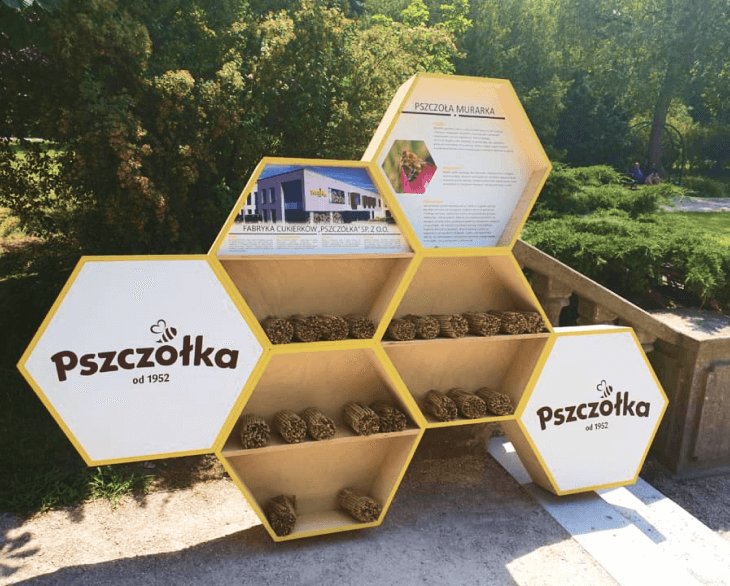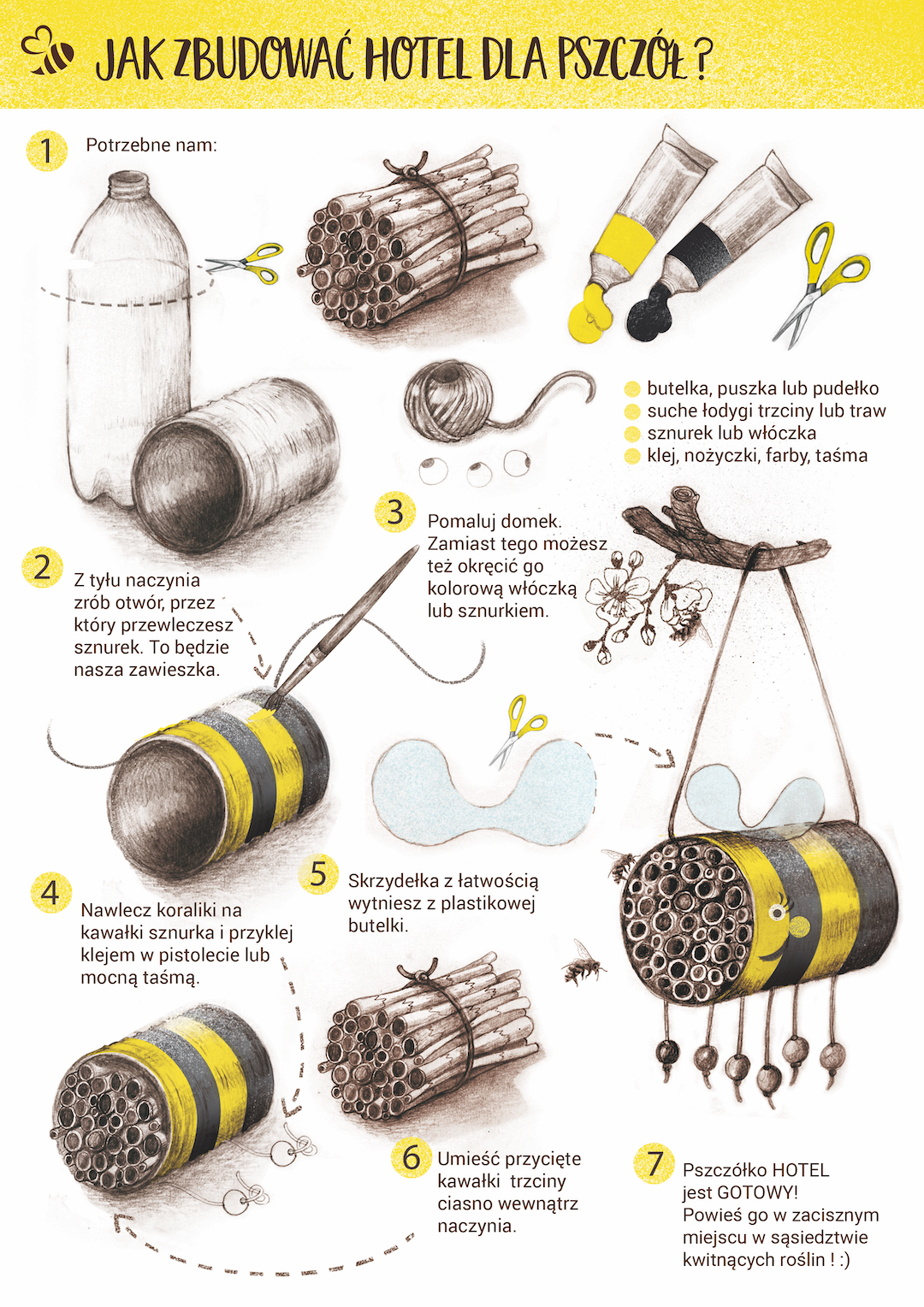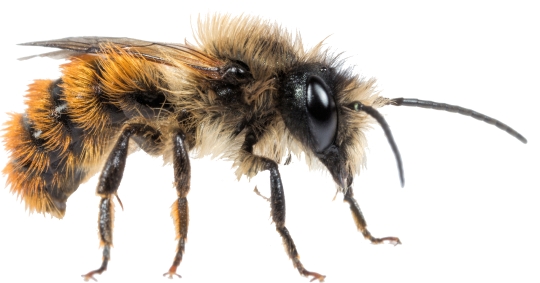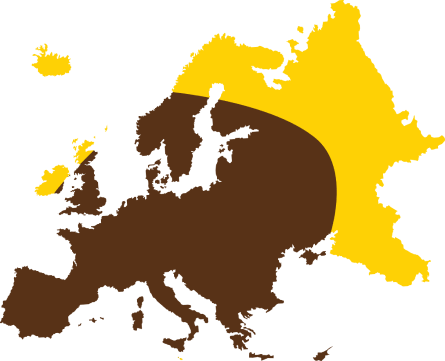Save the bees
This is our mission
Pro-ecology
Our aim is to shape pro-ecological attitudes and inspire local communities to take action to improve the living conditions of wild bees. By implementing the project, we also wanted to strengthen social awareness, drawing attention to the important role of bees in the ecosystem..
We want to inspire to create a bee-friendly space, show how to make a bee house on your own in a simple way, we have created a bee-friendly flower calendar. We encourage you to join the action and use the hashtag #savethebees.
The main partner of our action is the University of Life Sciences in Lublin. The partner provided us with the necessary knowledge and materials about wild bees and their breeding.
Mason bee
Appearance
Body length 10-12 mm for females and 8-10 mm for males. The body of females is covered with dense hairs, which form red stripes on the abdomen. The head and the end of abdomen are black. The underside of the abdomen is yellowish brown. The body of the male is more slender and less hairy. On the head the male has a characteristic tuft of light-coloured hair, by which it can be easily distinguished from the female. The female has a stinger. It is not aggressive and does not defend its nest.
Life cycle
In April, the impregnated female starts to build a nest, lay eggs and collect food. A few days after the cells are closed, the larvae hatch from the eggs, feed on the pollen stored in the cell, mixed with nectar, make their eggs and pupate in September. The larvae spend the winter as adults in their hives. In spring they fly out, the females live about 7-8 weeks after mating.
Food
The garden gall midge feeds on nectar and pollen. It does not produce honey. The pollen is carried on long, yellow-brown hairs forming a brush on the ventral side of the abdomen. A female mason bee can pollinate more fruit trees than a hundred honey bees. It likes it warm and dry.
Occurrence
Mason bees inhabit central and southern Europe. Genetic studies indicate little variation between populations within the continent. In Poland it is a common species. It usually nests in hollow plant stems, but also in crevices and openings in wooden and clay walls. Natural habitats for wild-caught insects are old tree branches, reed tubes and umbelliferous plants; they also nest in old barns and wooden houses. Nowadays bees live in a hostile environment. Bee habitats and hiding places are often destroyed by people (e.g. by mowing lawns, raking leaves, cleaning up rotten trees). Together with action partners, Pszczółka builds hotels where wild bees can live safely.
Occurrence of the Mason bee in Europe
Download files



